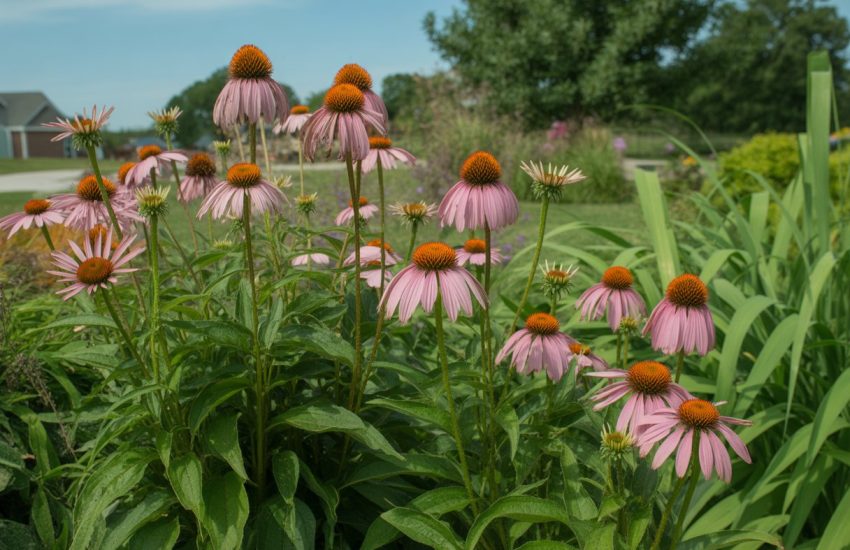Planting Native Trees for Wildlife: Enhancing Biodiversity and Ecosystem Health
Planting native trees supports local wildlife by offering food, shelter, and breeding grounds that fit the needs of native species. Native trees are crucial because they create a natural habitat that non-native trees just can’t replicate in the same way.
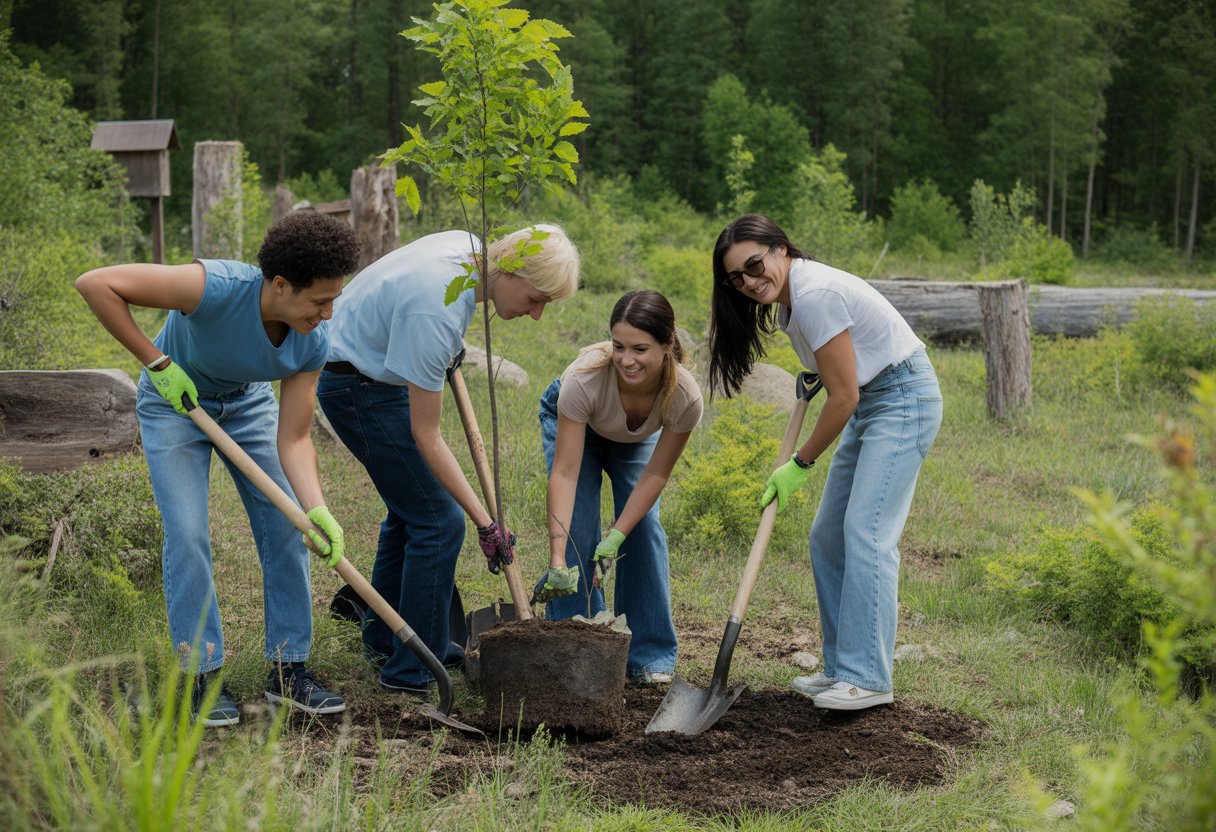
These trees help maintain biodiversity and keep ecosystems stable. When you choose native species, you make sure wildlife has the right resources to survive in its own backyard.
Benefits of Planting Native Trees for Wildlife
Native trees play a big role in supporting a wide mix of animal life. They give food, shelter, and space for breeding—just what local species need to thrive.
Their impact goes way beyond a single plant or animal. They help keep the whole environment running smoothly.
Supporting Biodiversity
Native trees maintain habitats that local wildlife depends on. They offer food like nuts, berries, and leaves, which native insects, mammals, and birds need.
This relationship keeps local species diversity alive. Native trees also host native insect pollinators that evolved alongside them.
A lot of butterfly and moth species need native trees for their larvae. Non-native trees usually can’t fill that role, so biodiversity drops when they take over.
When wildlife populations stay diverse, ecosystems become more resilient. Pollination, seed dispersal, and pest control all get a boost from this variety.
Enhancing Habitat for Wildlife
When you plant native trees, you give birds, small mammals, and insects better places to nest, hide, and feed. The branches, trunks, and even the leaf litter provide safe spots for all kinds of critters.
These trees grow into shapes and sizes that feel familiar to animals used to the original landscape. Think about cavity-nesting birds like woodpeckers or squirrels—they need those natural hollows.
Native trees also keep soil stable and moist, which helps ground-dwelling animals. Non-native plants can mess with these conditions, sometimes making life harder for native wildlife.
Promoting Pollinators and Bird Species
Native trees give pollinators the right nectar and pollen at the right times. Solitary bees, butterflies, and moths often rely on specific native trees for food and a place to reproduce.
Birds benefit from this, too. They eat the pollinators or the fruit that native trees produce.
Species like warblers, finches, and orioles tend to stick with native trees for foraging and nesting. These trees support the insects and other food sources birds need.
A wildlife garden with native trees attracts a healthy mix of birds and pollinators. It sets up a natural cycle where food and shelter overlap, helping lots of species at once.
Selecting Native Trees and Plants for Wildlife Gardens
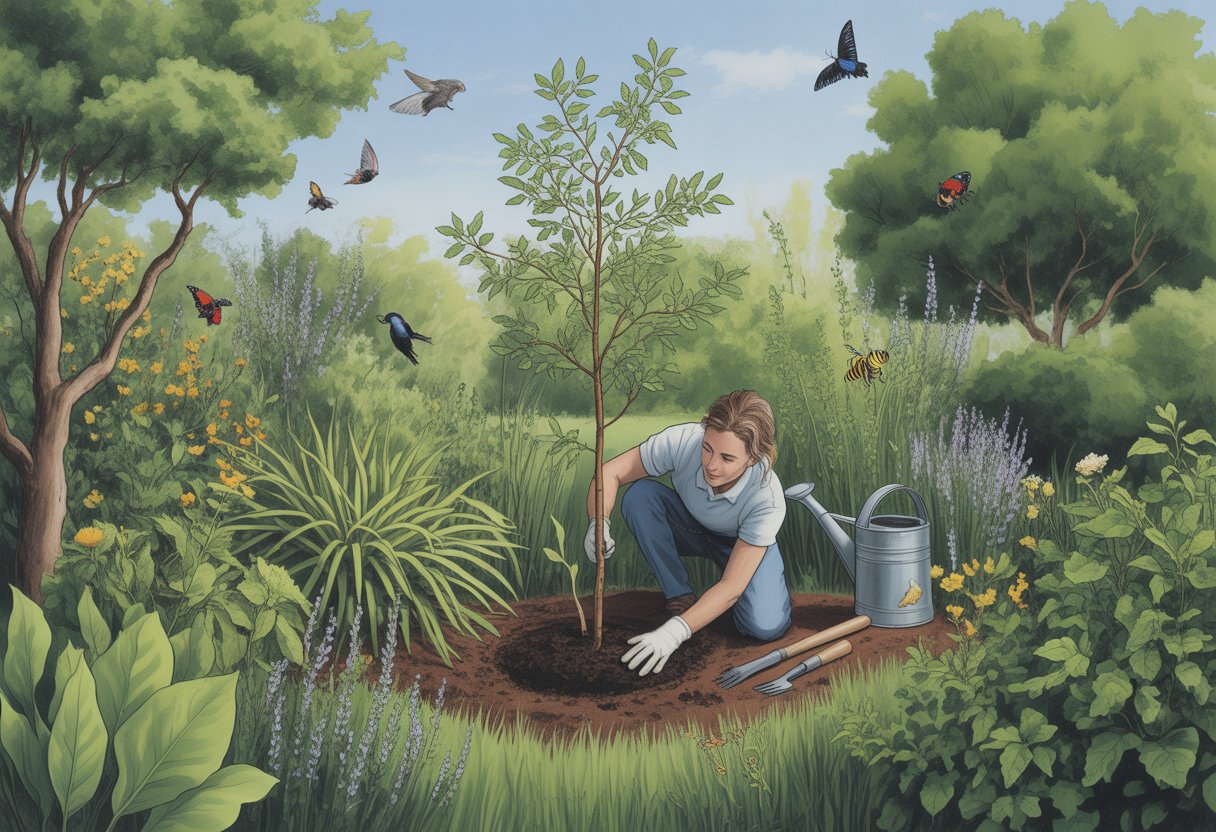
Picking the right native plants gives local wildlife what they need—habitat, food, and shelter. It helps to know which species grow well in your area.
Plenty of guides and resources can help you choose the best native trees and plants for your space.
Identifying Native Species
Native species evolved in a specific region, so they’re built for the local climate and soils. You can check state or regional native plant lists to find them.
In California, for example, toyon, elderberry, and ceanothus are great for pollinators and birds. Using a native plant finder tool helps you double-check if a plant is indigenous to your area.
That way, you’ll know if things like box elder or serviceberry will thrive and help wildlife. Try to skip non-native species—they might crowd out the local plants.
Choosing Common Native Plants and Trees
Common native trees and plants usually handle local conditions with ease. Milkweed and butterfly weed bring in butterflies, while California fuchsia and salvia are hummingbird magnets.
Box elder and serviceberry trees offer food and nesting spots. Shrubs like toyon and elderberry provide berries for birds in winter.
Wildflowers such as California poppy and coneflower add nectar sources. Mixing these up boosts biodiversity and ensures food’s available all season.
Utilizing Regional Native Plant Resources
Local botanical gardens, extension offices, and native plant societies are full of good info. In California, groups recommend plants like New England aster and ceanothus for the region.
Online databases let you narrow your options by area and plant type. Nurseries that focus on natives can also help you pick out plants like milkweed or toyon for your garden.
Best Practices for Planting and Maintaining Native Trees
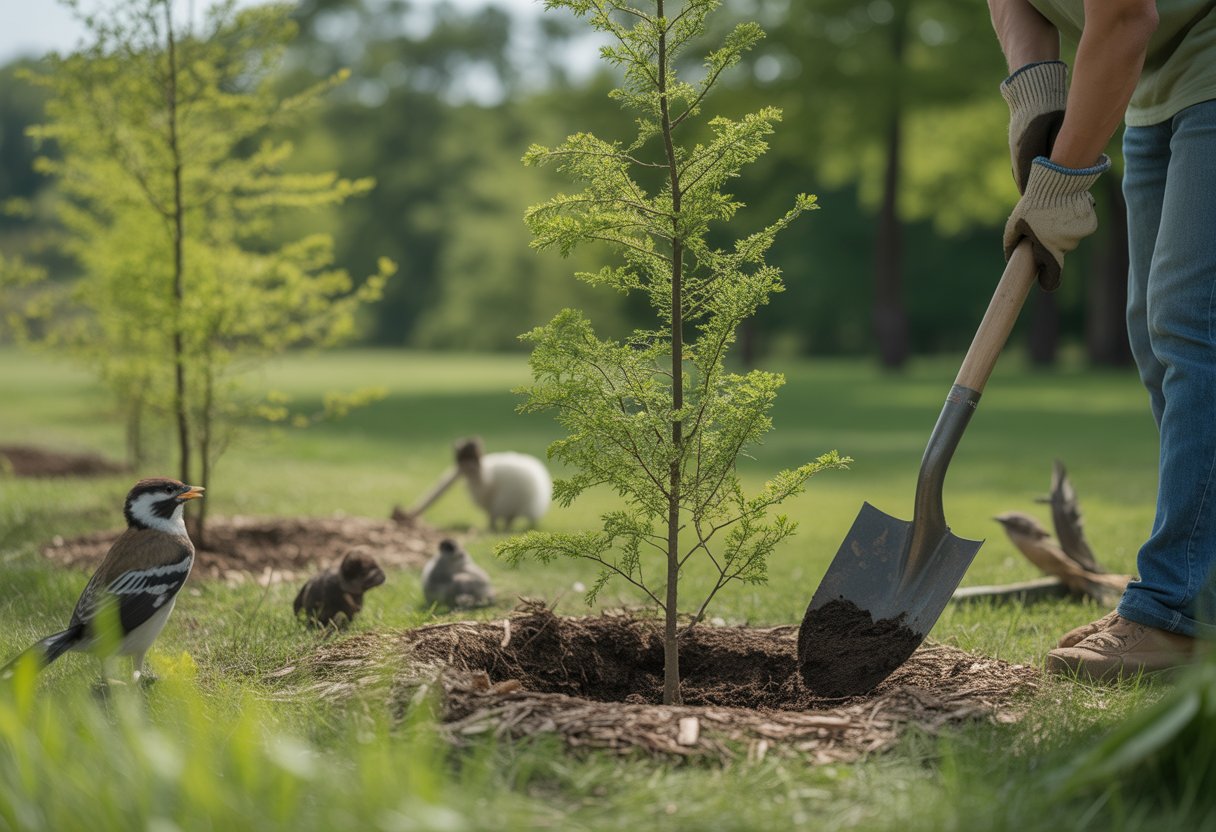
Getting native trees established means picking the right spot, handling water, improving soil, and keeping invasive plants in check. These steps help the trees grow strong and encourage wildlife to stick around.
Site Selection and Preparation
Choose a spot with the right sunlight, drainage, and enough space for the tree to grow. Native trees do best when the site matches their natural habitat.
Before you plant, clear away debris and unwanted plants. If you can, run a soil test to check nutrients and pH.
Remove grass or weeds within about three feet of where you’ll plant. That gives young trees a better shot at thriving.
Plant species that match your local climate and soil. It’s a good idea to group trees with compatible understory plants to keep the ecosystem balanced.
Establishing Water Sources
Young trees need steady watering, especially during dry spells. Deep water them once or twice a week for the first couple of years.
Rainwater harvesting or drip irrigation can save water and deliver it right where it’s needed. Mulch around the base helps keep the soil moist and cuts down on evaporation.
If there’s a natural water source nearby, make sure roots can reach it without causing erosion. Don’t overdo it—too much water can hurt the roots.
Soil Health and Restoration
Healthy soil makes a big difference. Add compost or leaf mulch to boost fertility and structure.
Try to avoid using heavy equipment near roots, since compacted soil can hurt trees. Sometimes, aerating the soil helps with air and water flow.
Native trees like soils with balanced nutrients. Skip heavy fertilizers—they tend to help invasive plants more than natives. If you’re restoring a site, adding microbial inoculants can rebuild soil health over time.
Controlling Invasive and Non-native Plants
Plants like butterfly bush can outcompete native trees for water and nutrients. Spotting and removing them early is key.
You can pull them by hand, use targeted herbicides, or even controlled burns if that’s allowed. Keeping a thick cover of native ground plants helps crowd out invaders.
Keep an eye on things after you plant. Wildlife gardens often need regular checks to make sure natives take hold and stay healthy.
Maximizing Wildlife Value in Native Plant Gardens
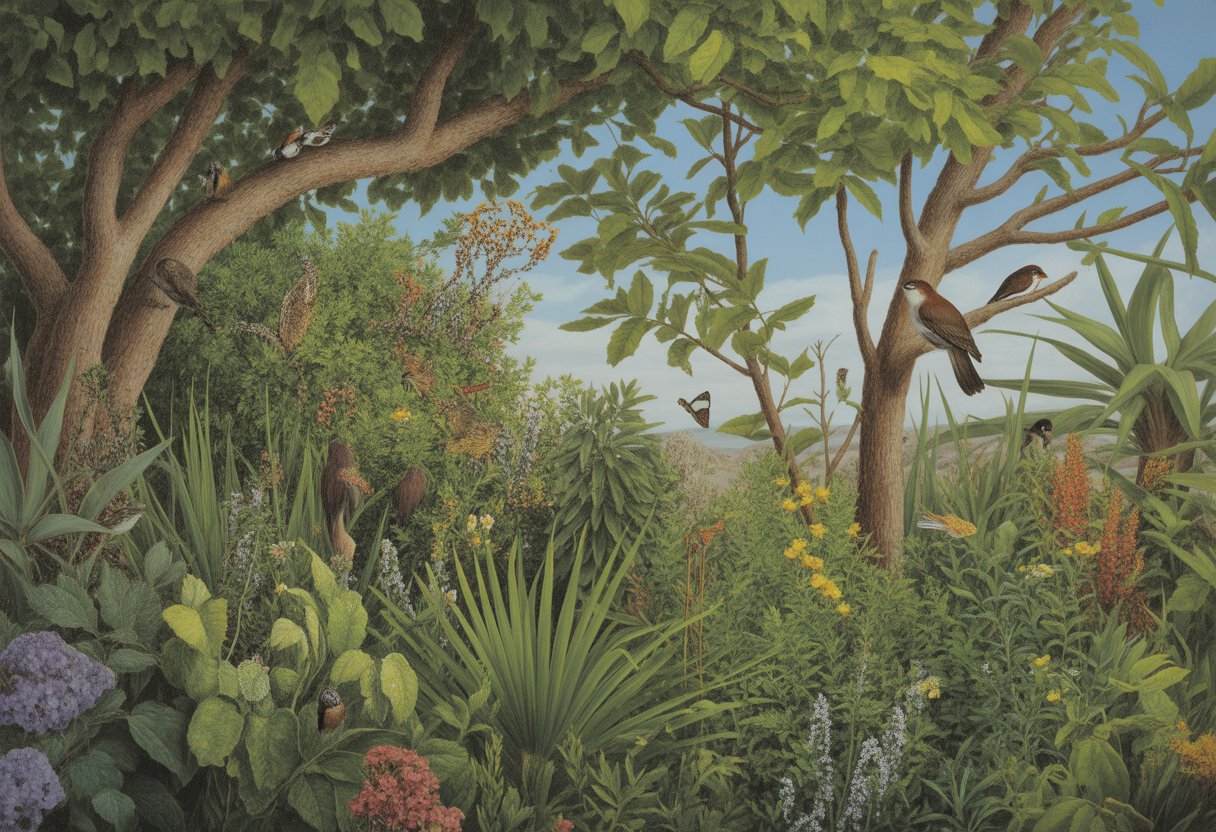
A good native plant garden gives wildlife what they need to survive and raise their young. It should offer different food sources, safe spots to hide, and a pollinator-friendly environment—ideally without harsh chemicals.
Providing Food and Shelter
Native gardens need plants that make nectar, seeds, and fruit at different times. Shrubs are especially important since they feed birds, small mammals, and insects.
For instance, milkweed is a must for monarch butterfly larvae. Other native flowering plants give nectar to bumblebees and other pollinators.
Dense shrubs and layered plantings—ground covers, shrubs, and trees—offer shelter and nesting places. Leaving deadwood and leaf litter around helps insects, which then feed bigger animals.
Creating Pollinator Habitats
Pollinators look for flowers blooming from early spring to late fall. A well-planned garden should have a steady supply of native blooms.
Plants like goldenrod, coneflower, and bee balm draw in a variety of pollinators. Native bumblebees love flower clusters with open shapes, since it’s easier for them to gather nectar and pollen.
Adding larval host plants like milkweed for monarchs rounds out the habitat. Avoid planting huge patches of just one thing—diversity keeps pollinator populations healthier. A shallow water dish or two can help keep pollinators coming back.
Minimizing Pesticide Use
Pesticides pose a real threat to wildlife and pollinators. They shrink insect populations and directly harm species like bumblebees and monarch butterflies.
If you’re planting a native garden, it’s best to skip chemical pesticides altogether. Or, if you absolutely have to, stick to organic methods and use them sparingly.
Try integrated pest management. Pull pests off by hand or attract predator insects—these tricks help you avoid chemicals.
Honestly, more gardeners should know how pesticides impact beneficial insects. Creating a pesticide-free space gives pollinators a fighting chance and keeps your garden’s natural balance intact.

